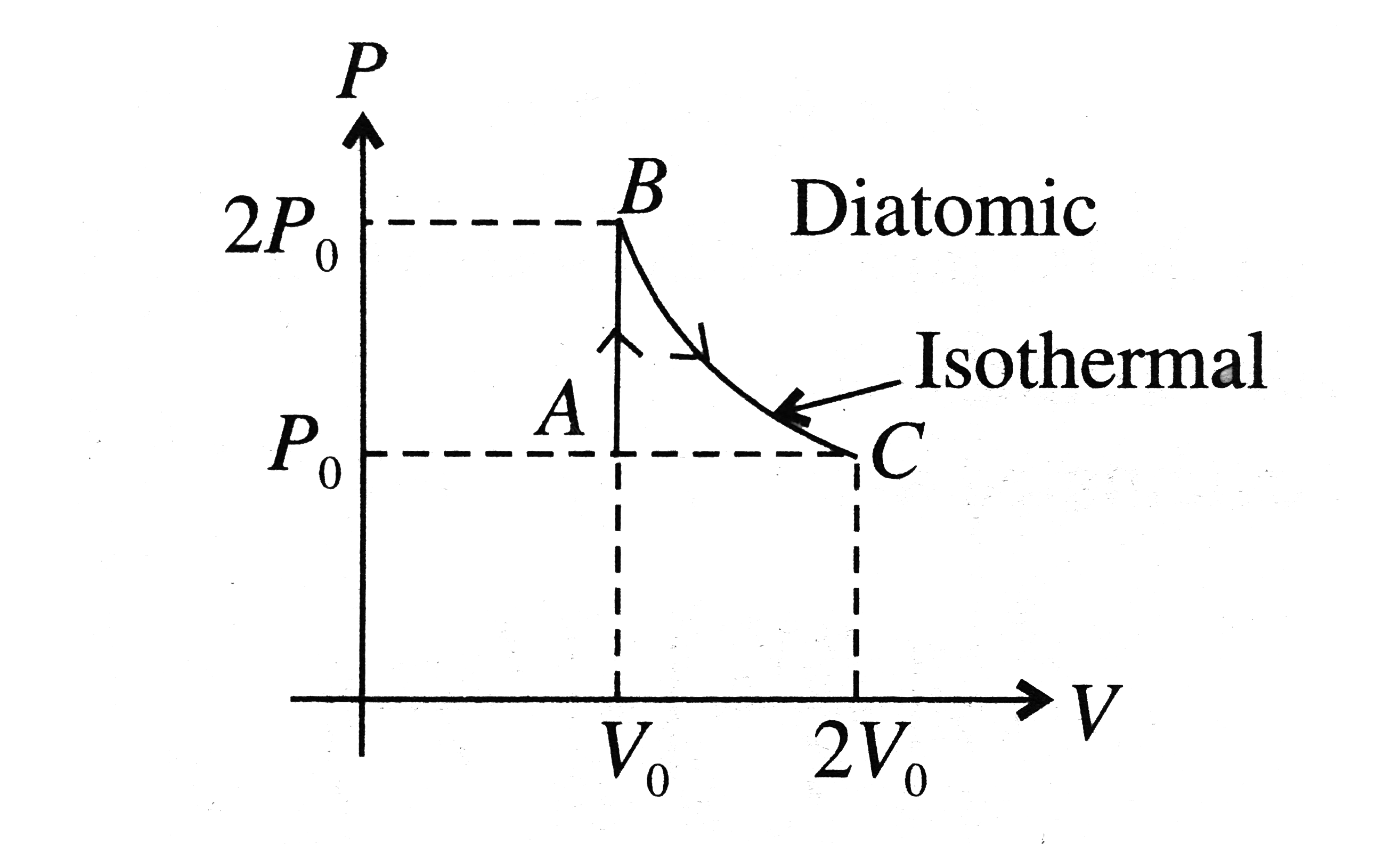4.8g of C (diamond) on complete combustion evolves1584kJ of heat. The standard heat of formation of gaseous carbon is 725kJ/mol. The energy required for the process
C(graphite) → C(gas)
C(diamond) → C(gas) are
725, 727
727, 725
725, 723
None of these
The correct Answer is:C
To solve the problem, we need to calculate the energy required for the following processes:
1. C(graphite)→C(gas)
2. C(diamond)→C(gas)
Step 1: Understand the Given Data
- The heat evolved during the complete combustion of 4.8 g of carbon (diamond) is 1584 kJ.
- The standard heat of formation of gaseous carbon is given as +725 kJ/mol.
Step 2: Calculate Moles of Carbon in 4.8 g
The molar mass of carbon (C) is approximately 12 g/mol.
Moles of carbon=massmolar mass=4.8g12g/mol=0.4mol
Step 3: Calculate the Heat Released per Mole of Carbon
The total heat released for 0.4 moles of carbon is 1584 kJ. To find the heat released per mole:
Heat released per mole=1584kJ0.4mol=3960kJ/mol
Step 4: Write the Reaction for Combustion of Diamond
The combustion of diamond can be represented as:
C(diamond)+O2→CO2+heat
The heat released during this reaction is 3960 kJ/mol.
Step 5: Relate the Two Processes
1. For the process C(graphite)→C(gas), the heat of formation is given as +725 kJ/mol.
2. For the process C(diamond)→C(gas), we can relate it to the graphite process.
Step 6: Calculate the Energy Required for C(diamond)→C(gas)
Using Hess's law, we can express the energy change for the diamond to gas conversion as:
ΔHdiamond to gas=ΔHdiamond to graphite+ΔHgraphite to gas
Where:
- ΔHgraphite to gas=+725kJ/mol
- ΔHdiamond to graphite=−3960kJ/mol (since it is the reverse of combustion)
Thus,
ΔHdiamond to gas=−3960+725=−3235kJ/mol
Step 7: Conclusion
The energy required for the process C(diamond)→C(gas) is -3235 kJ/mol, indicating that energy is released when diamond converts to gas.
Summary of Results
1. Energy required for C(graphite)→C(gas) = +725 kJ/mol
2. Energy required for C(diamond)→C(gas) = -3235 kJ/mol
2. C(diamond)→C(gas)
- The heat evolved during the complete combustion of 4.8 g of carbon (diamond) is 1584 kJ.
- The standard heat of formation of gaseous carbon is given as +725 kJ/mol.
The molar mass of carbon (C) is approximately 12 g/mol.
The total heat released for 0.4 moles of carbon is 1584 kJ. To find the heat released per mole:
The combustion of diamond can be represented as:
1. For the process C(graphite)→C(gas), the heat of formation is given as +725 kJ/mol.
2. For the process C(diamond)→C(gas), we can relate it to the graphite process.
Using Hess's law, we can express the energy change for the diamond to gas conversion as:
- ΔHgraphite to gas=+725kJ/mol
- ΔHdiamond to graphite=−3960kJ/mol (since it is the reverse of combustion)
The energy required for the process C(diamond)→C(gas) is -3235 kJ/mol, indicating that energy is released when diamond converts to gas.
1. Energy required for C(graphite)→C(gas) = +725 kJ/mol
2. Energy required for C(diamond)→C(gas) = -3235 kJ/mol
Topper's Solved these Questions
- THERMOCHEMISTRYBook:VMC MODULES ENGLISHChapter:THERMOCHEMISTRYExercise:LEVEL-2
Explore 65 Videos
- THERMOCHEMISTRYBook:VMC MODULES ENGLISHChapter:THERMOCHEMISTRYExercise:JEE MAIN (ARCHIVE)
Explore 20 Videos
- THERMOCHEMISTRYBook:VMC MODULES ENGLISHChapter:THERMOCHEMISTRYExercise:LEVEL - 0 Long Answer Type
Explore 13 Videos
- THEORY OF SOLUTIONSBook:VMC MODULES ENGLISHChapter:THEORY OF SOLUTIONSExercise:JEE Advanced (Archive)
Explore 31 Videos
- THERMODYNAMICSBook:VMC MODULES ENGLISHChapter:THERMODYNAMICSExercise:JEE ADVANCED (ARCHIVE)
Explore 44 Videos
Similar Questions
The heat of formation of CO2 is -407 kJ/mol. The energy required for the process 3CO2(g)→3C(g)+2O3(g) is
View SolutionThe enthalpy change for the process
C(graphite)→C(g)is called
View SolutionThe heat of combustion of carbon to CO2is−395.5kJ/mol.The heat released upon the formation of35.2g ofCO2from carbon and oxygen gas is
View SolutionIf the enthalpy of combustion of diamond and graphite are −395.4kJmol−1 and −393.6kJmol−1, what is enthalpy change for the C(graphite)→C(diamond)?
View SolutionGiven standard enthalpy of formation of CO(−110KJ mol−1) and CO2(−394KJ mol−1). The heat of combustion when one mole of graphite burns is
View SolutionEnthalpy of atomisation of diamond is 600kJ/mol.C (diamond) →C(g). Find the bond energy of C−C bond.
View SolutionP-V curve of a diatomic gas is shown in the Fig. Find the total heat given to the gas in the process A→B→C

View SolutionP-V curve of a diatomic gas is shown in the Fig. Find the total heat given to the gas in the process A→B→C

View SolutionP-V curve of a diatomic gas is shown in the Fig. Find the total heat given to the gas in the process A→B→C

View SolutionThe heat of combustion of solid benzoic acid at constant volume is −321.30kJ at 27∘C. The heat of combustion at constant pressure is
View Solution

